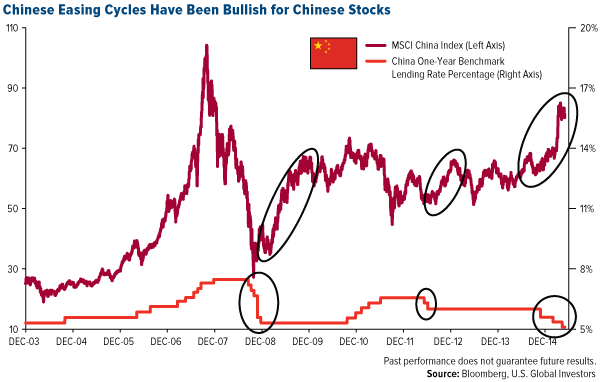It’s been a little over a year since Narendra Modi took office in India, and so far the results have been mostly positive for the South Asian country and the surrounding region. Among other achievements, Modi’s government has managed to enact important policy reforms, increase public investments in infrastructure, lower food inflation and generally open India up to business on a global scale.
CLSA’s chief equity strategist, Christopher Wood, gives the country accolades in his most recent newsletter. Wood writes that while “the halo effect has come off the Modi phenomenon” somewhat, India nonetheless remains “the most promising major emerging market story on a five- to 10-year view globally.”
Looking ahead, analysts forecast that India’s economy will expand between 7.5 percent and 8.5 percent for the 2015 and 2016 fiscal years, faster than any other G20 nation , including China.
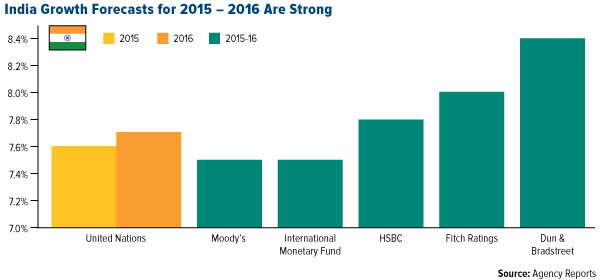
This is growth that can be sustained for the long-term, a topic I wrote about last October . According to the International Monetary Fund , within the next decade and a half, “India will have the largest, and among the youngest, workforces in the world, and will need to create jobs for the roughly one hundred million young Indians who will enter the job market in the coming decade.” By 2050, India is expected to be the world’s second-largest economy based on purchasing power parity, following China.
Global investors recognize these positive data points and are piling into Indian equities, especially now that aggressive monetary easing in the country seems likely. CLSA’s Wood points out that $737 million a month on average have flowed into India-focused mutual funds since Modi took office last May, a dramatic reversal from the amounts seen prior to that.
Historically Low Interest Rates Help Push Chinese Equities Higher
Indeed, rate cuts have been constructive for not only Indian equities but also the Chinese market. As you can see below, easing cycles have historically coincided with strong market rallies in the MSCI China Index, a proxy for China H-shares, or stocks of Chinese companies listed on foreign exchanges. H-shares are one of the principal ways our China Region Fund (USCOX) has participated in the current bull market.
After three cuts in the most recent easing cycle, Chinese rates now stand at their lowest point ever, helping the index move higher in its quest to regain its November 2007 highs.
H-Shares Half as Cheap as Chinese Domestic Equities
Judging from the rally in H-shares, some investors might be concerned that the market is too expensive right now. On the contrary, H-shares, expressed below by the Hang Seng Index, are trading at a much cheaper multiple of 8.9 times estimated earnings to A-shares’ 17.4, a discount of 48 percent.
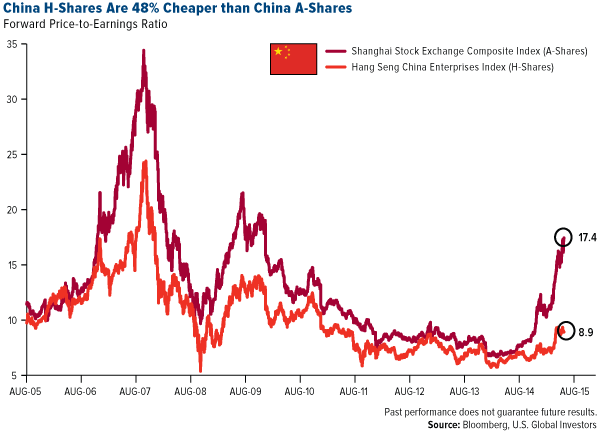
You can also see that both H-shares and A-shares have traded at much higher multiples in the past, evidence that the rally is not yet overdone.
When we compare this trading cycle with the previous major rally that occurred from June 2005 to October 2007, we see that the run-up has plenty of room to climb higher.
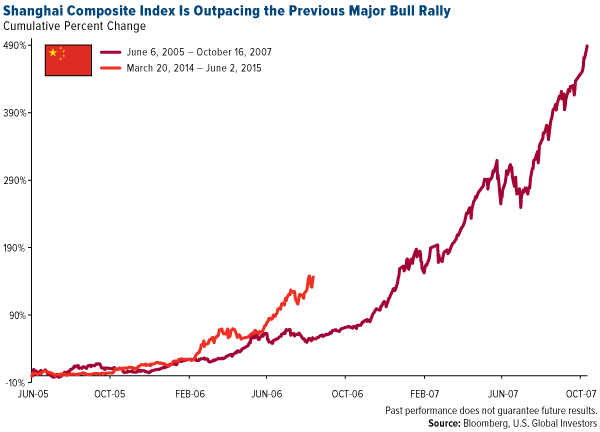
“We might be in the middle of a bull market, not the end,” says Xian Liang, portfolio manager of USCOX.
Like Indian equities, Chinese equities are attracting massive amounts of fund inflows. For the week ending May 27, global investors reallocated $4.6 billion to A-shares ahead of FTSE indexing.
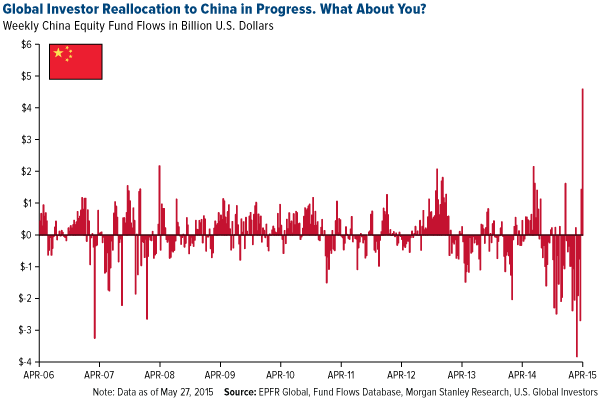
Last Thursday, the Shanghai Composite Index fell 6.5 percent , probably due to profit-taking. This represented the most significant correction since January, when the Chinese government curbed margin lending. It’s important for investors to look beyond the short-term noise and recognize that any correction this cycle could be seen as an opportunity to accumulate.
Again, USCOX continues to participate in this bull market through China H-shares and A-share exchange-traded funds. This helped the fund achieve a “golden cross” in January, which occurs when the 50-day moving average crosses above the 200-day moving average.
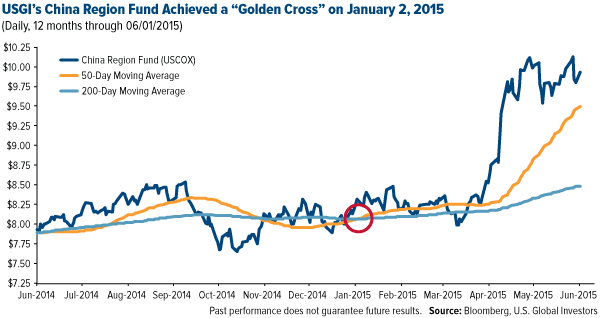
Such technical indicators are seen as harbingers of strong growth. This particular move shows that the Chinese market has the support it needs to maintain upward momentum.
American Companies Buy Back $71 Billion of Stock in May Alone
As for American equities, they continue their trend of rewarding shareholders in the form of dividends and stock buybacks. Last week I mentioned that the amount in buybacks is expected to reach a staggering $1.2 trillion by year’s end, surpassing the all-time high of $863 billion set in 2007.
Stock market research firm Birinyi Associates reports that U.S. companies repurchased over $71 billion of shares in May alone.
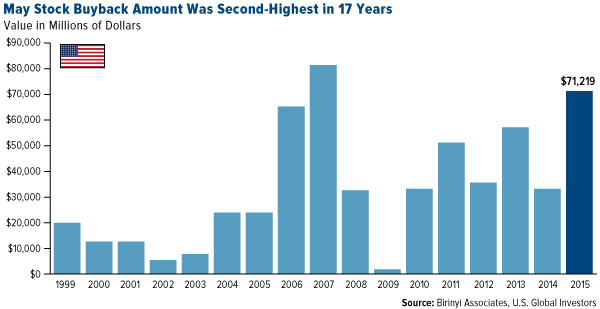
One more compelling reason we find the domestic market so attractive, and offer investors the opportunity to participate with our All American Equity Fund (GBTFX) . All of the holdings in GBTFX either pay a dividend or are currently buying back their stock.
Countless Jets Will Need to Be Replaced in the Coming Years
A final note I’d like to end on is the sheer number of jumbo jets that will need replacing in the coming years as domestic airlines seek to incorporate smaller, more efficient aircraft. Manufacturers Boeing and Airbus certainly have their work cut out for them and, in fact, face years’ worth of backlogs.

Business Insider recently shared a slideshow that reveals what happens when airlines retire older models in their fleet. Many of them end up at the Southern California Logistics Airport, where they wait to be resold, dismantled or put back into commission. You can view the slideshow here .
Total Annualized Returns as of 3/31/2015:FundOne-YearFive-YearTen-YearGross Expense RatioExpense CapChina Region Fund6.63%0.52%5.14%2.97%2.55%



